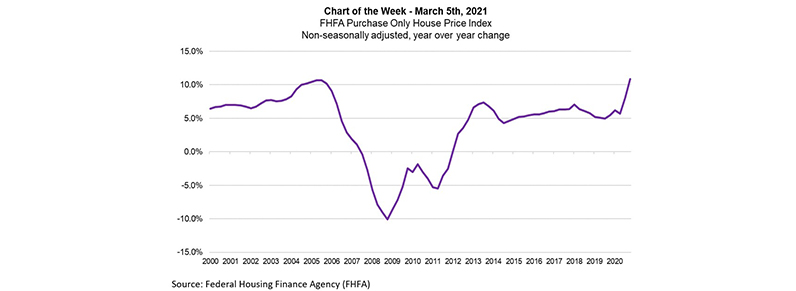
MBA Chart of the Week Mar. 5 2021: FHFA Purchase-Only Index

The rate of U.S. home-price appreciation continues to be driven higher by a combination of strong demand for housing and record-low housing inventory for sale. The Federal Housing Finance Agency’s most recent release showed the fourth quarter saw annual home-price growth of 10.9 percent –the strongest annual change on record. The previous high was an increase of 10.7 percent in third quarter 2005.
Even with an elevated pace of existing home sales, inventory declined to a record low of 1.04 million units – a 1.9-months’ worth of supply, based on January data from the National Association of Realtors. New home sales on the market were closer to their historic norms at 307,000 units, which represented a four-month supply, as reported by the U.S. Census Bureau.
New single-family construction activity could be a part of the inventory solution, and it is still running at a robust level, as home builders have responded to the greater demand. Single-family starts and permits were still at their highest levels since 2006 in January, and these newly built homes will serve to fill some of the shortage in inventory. However, builders still face headwinds, such as increased costs and availability of homebuilding materials. Additionally, the existing-home sales segment still accounts for a greater share of the market, so more existing listings would also be most beneficial to overall inventory conditions.
These upward price trends have also showed up in higher median home sales prices (14 percent higher than a year ago) and higher purchase mortgage loan balances (12 percent higher). With credit availability still tight, and home prices still increasing much faster than income growth, we could see a severe affordability problem if these trends persist, which would damper the housing market recovery.
–Joel Kan jkan@mba.org.
